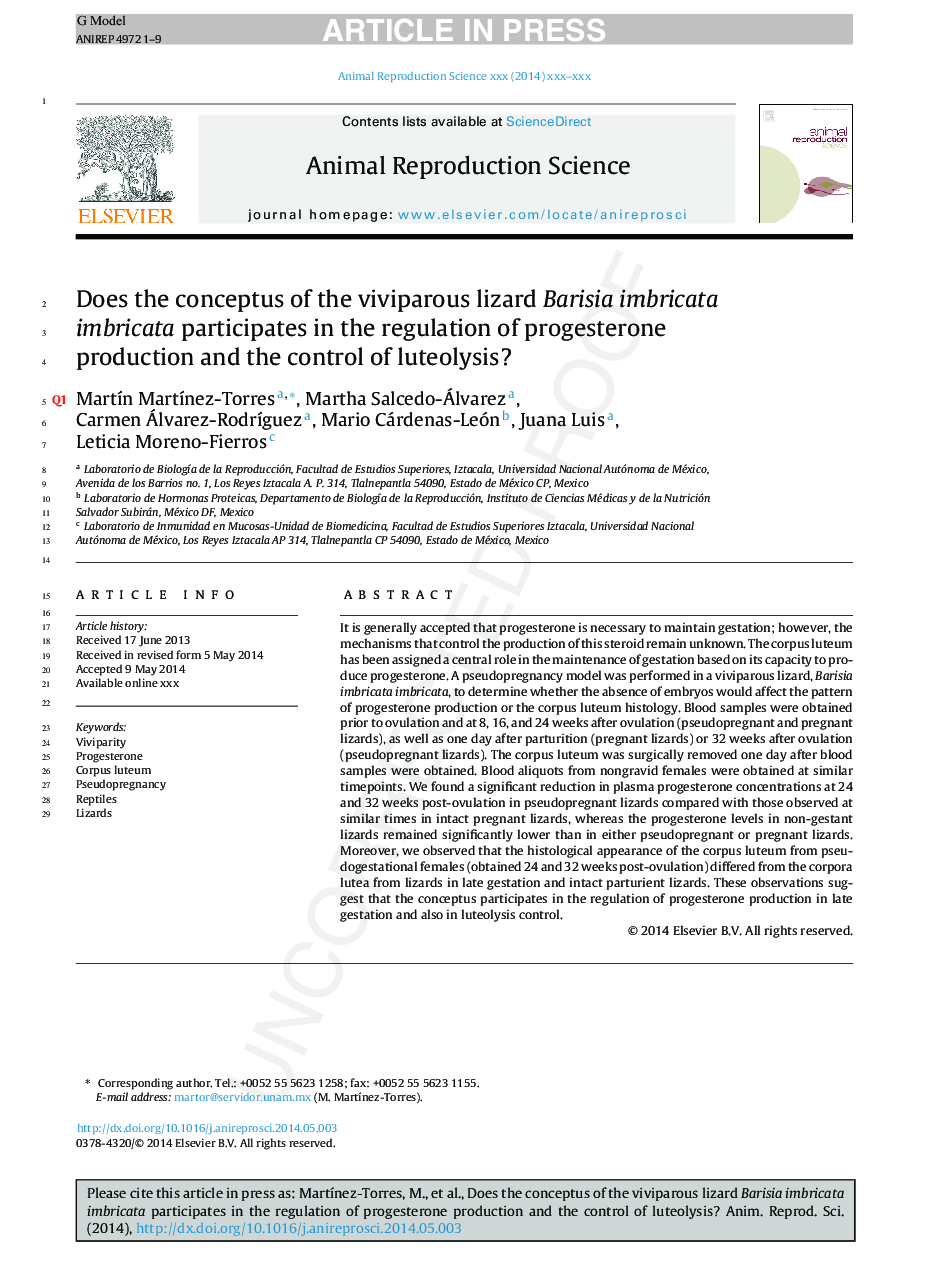| Article ID | Journal | Published Year | Pages | File Type |
|---|---|---|---|---|
| 8404816 | Animal Reproduction Science | 2014 | 9 Pages |
Abstract
It is generally accepted that progesterone is necessary to maintain gestation; however, the mechanisms that control the production of this steroid remain unknown. The corpus luteum has been assigned a central role in the maintenance of gestation based on its capacity to produce progesterone. A pseudopregnancy model was performed in a viviparous lizard, Barisia imbricata imbricata, to determine whether the absence of embryos would affect the pattern of progesterone production or the corpus luteum histology. Blood samples were obtained prior to ovulation and at 8, 16, and 24 weeks after ovulation (pseudopregnant and pregnant lizards), as well as one day after parturition (pregnant lizards) or 32 weeks after ovulation (pseudopregnant lizards). The corpus luteum was surgically removed one day after blood samples were obtained. Blood aliquots from nongravid females were obtained at similar timepoints. We found a significant reduction in plasma progesterone concentrations at 24 and 32 weeks post-ovulation in pseudopregnant lizards compared with those observed at similar times in intact pregnant lizards, whereas the progesterone levels in non-gestant lizards remained significantly lower than in either pseudopregnant or pregnant lizards. Moreover, we observed that the histological appearance of the corpus luteum from pseudogestational females (obtained 24 and 32 weeks post-ovulation) differed from the corpora lutea from lizards in late gestation and intact parturient lizards. These observations suggest that the conceptus participates in the regulation of progesterone production in late gestation and also in luteolysis control.
Related Topics
Life Sciences
Agricultural and Biological Sciences
Animal Science and Zoology
Authors
MartÃn MartÃnez-Torres, Martha Salcedo-Álvarez, Carmen Álvarez-RodrÃguez, Mario Cárdenas-León, Juana Luis, Leticia Moreno-Fierros,
